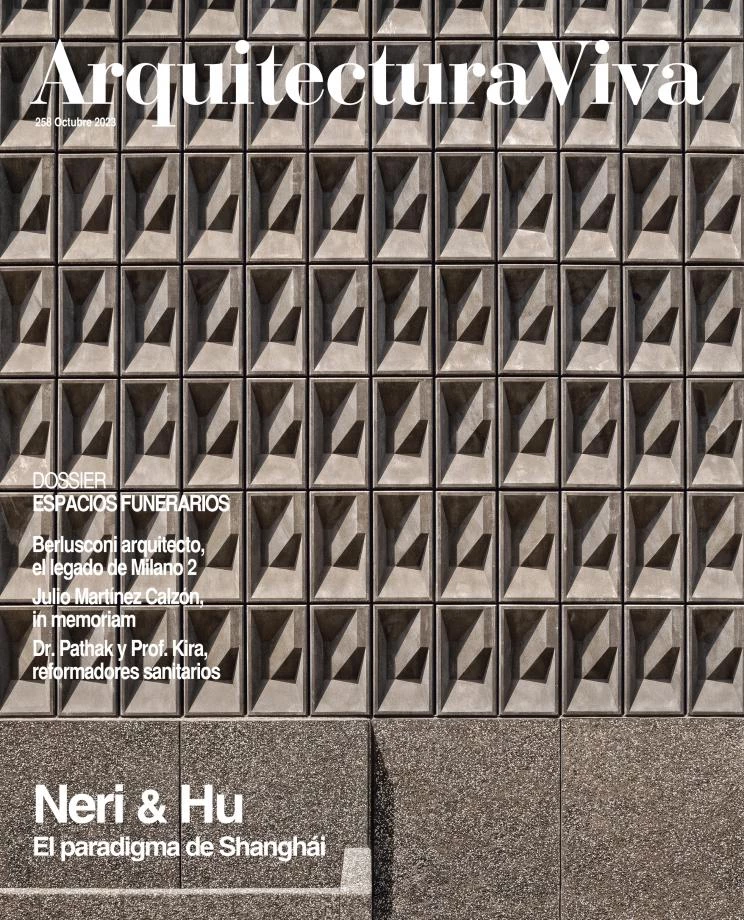
Photo: Jorge Bernabeu
Expert on hybrid structures, honored with the National Engineering Award, and author of twenty-six bridges and an endless list of works with architects like Foster, Isozaki, Ando, Pei, Navarro Baldeweg, García de Paredes, Cruz & Ortiz or Miralles, Julio Martínez Calzón was a humanist engineer, as much a connoisseur of Greek classics as of opera or contemporary art. In our magazine he wrote on the Twin Towers, on structural concrete or on the bridge as civilizing event, but his latest interests were 19th-century painting, on which he published in 2016 two colossal tomes that I presented with him at Naos bookstore, and poetry, with a selection of verses in Spanish and English, Poemas cruzados, which he presented at the Círculo de Bellas Artes in February this year. His complete oeuvre was collected in a volume whose prologue is abridged below.
Julio in Autumn
Having passed il mezzo del camin, in 2006 Julio Martínez Calzón took stock of his career through a publication that brought together his bridges, his collaborations with architects, and his pictorial and literary work. To anyone who has only known his oeuvre in sporadic bursts here and there, the motley corpus of works where he has left specimens of an exacting talent is surprising. Without realizing it we live our lives surrounded by a swarm of constructions that would be different had he not taken part in them, and such distracted immersion in the artificial world created by his structures automatically guides our stares and steps like iron filings in a magnetic field. The places built by great engineers can be startling at times, inviting at others, but often go unnoticed like the air we breathe or the ground under our feet, noticed only when absent. Although occasionally designed with others and frequently anonymous to the untrained eye, his works show a remarakable consistency of authorship.
From his opera prima on Paseo de la Castellana, the bridge carried out in 1970 with José Antonio Fernández Ordóñez to connect the streets Juan Bravo and Eduardo Dato, which would become a symbol of Spain’s transitional moment (two beams of core-ten steel on white concrete pillars, and a deck crowned with railings by Eusebio Sempere, under which an open-air sculpture museum would be installed with Chillida’s controversial Beached Mermaid hanging from the pier collar), to his last transatlantic works, Martínez Calzón’s trajectory illustrates the coherence of an intellectual engineer determined to reconcile technique and art, steel and concrete, mathematics and form. This more syncretic than eclectic attitude – which made him take equally from Greek and Eastern thought and from analytical drawing and poetic synthesis, in search of that sublayer of knowledge and pleasure common to mathematics and music – is what came forth in his capacity to combine innovation and continuity, in pursuit of the adventure of creation with every new project, all the while also constructing on the inherited base of scientific knowledge, the stratified logic of the territory, and the gradual expansion of his own experience.
At this unusual crossroads, the engineer and music lover Martínez Calzón orchestrated shouts and murmurs with operatic intention, and made us conscious spectators of a biographical journey in which we were already unaware inhabitants, because we have all walked on and under his bridges, followed the edges of his structures with our eyes, spent hours or years inside his pavilions and towers; but very few know of his introspective reflections, his reading notes, his secret poems: the rigor of the construction and the precision of the concept are caught up in a tangle that can only be undone by the nimble fingers of poetry. After all, the labyrinths of the contemporary world have led us to so many dead ends that it might be wise to conclude that only the scalpel of emotion can free the Gordian Knot from modern reason.
Seen from the angle of an architecture that has been historically sequestered by ornament, and which only in some episodes of avant-garde impulse has recovered its communion with engineering, the path pursued by Martínez Calzón is glazed with moments where the violent emotion of the large scale and the beguiling precision of the calculated forms evoke the old polytechnical allure of reason, that which two centuries and a half ago institutionalized civil engineering as a joint product of the Industrial Revolution and the Enlightenment.
In view of his humanistic dimension, it could be said that Martínez Calzón was a rare engineer; but if we pay attention to the attributes that Agustín de Betancourt demanded in those wishing to practice the profession, we have to conclude that his case is the one to serve as an example for his colleagues: in addition to other areas of technical knowledge, the founder of the School of Civil Engineering urged engineers in 1791 to “have a non-vulgar education, that which not only makes men commendable in their treatment of others, but also gives them the discernment and fine tact which in certain cases is even of more use than science.” Discernment and fine tact that for sure abounded in the stocktaking that the now sadly gone Julio Martínez Calzón wrapped up in the autumn of his life.






